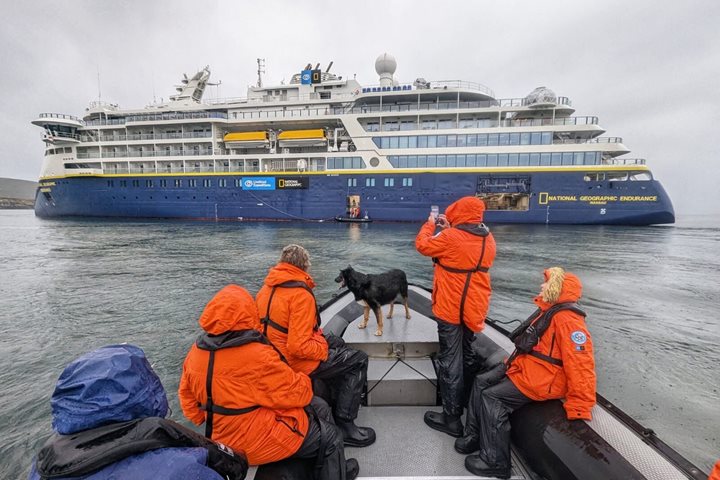During
the night we quietly sailed through the Beagle Channel, and in the early hours
of the morning headed through the Le Maire Strait before setting our course for
the Falkland Islands. We progressed from calm waters to the jousty strait and
then into a head-on sea that got progressively worse for the rest of the day.
Well not quite, in the late afternoon the winds dropped and soon the sea
conditions began to abate. By dinner time, we were approaching the Falkland
Islands, our first landfall being New Island. As with many of the westernmost
islands, here the west coast is often made up of dramatic cliffs which
gradually slope towards the eastern shoreline, which is often a beautiful, pale
yellow quartzite sandy beach. By the end of dinner we were safely anchored off
tomorrow’s landing beach and this would mean we could all settle in for a quiet
night.
However,
this is only part of the story for there were seabirds galore as well as a
number of marine mammals spotted on the crossing. We saw fin whales, a solitary
humpback whale as well as sea lions and dolphins. But it was undoubtedly the
pelagic seabirds that most captivated us as they showed off their utter mastery
of the conditions.
The
giants of the Southern Ocean were seen all day, wandering albatross as well as
northern and southern royal albatross. We tried to get our heads around the
fact that all the royal abatross were hatched and reared in New Zealand! Plus, other
seabirds were regularly seen throughout the day: pintado petrels, southern
giant petrels, southern fulmars, many sooty shearwaters, as well as the small
storm petrels.
During
the day there was a chance to meet the expedition team as well as several
presentations, giving all aboard excellent opportunities to get to know the
places we will be visiting a little better.
As the ship lay quietly at anchor under the beautiful evening sunlight we headed for our beds looking forward to the adventures that await us tomorrow.









